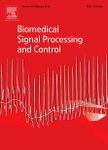版权所有:内蒙古大学图书馆 技术提供:维普资讯• 智图
内蒙古自治区呼和浩特市赛罕区大学西街235号 邮编: 010021

作者机构:Visvesvaraya Technol Univ Dept Comp Sci & Engn Belagavi 590018 Karnataka India VTU PG Ctr Dept Comp Sci Engn Mysuru India Visvesvaraya Technol Univ Belagavi 590018 Karnataka India
出 版 物:《BIOMEDICAL SIGNAL PROCESSING AND CONTROL》 (Biomed. Signal Process. Control)
年 卷 期:2025年第104卷
核心收录:
学科分类:0831[工学-生物医学工程(可授工学、理学、医学学位)] 10[医学]
主 题:Adaptive median filter Support vector machine M-SegNet Tree-based pipeline optimization tool Machine learning
摘 要:Lung cancer arises when lung cells proliferate uncontrollably, creating tumors that may disrupt the normal functioning of the lungs. Accurate classification of lung cancer leads to earlier detection, which significantly improves treatment outcomes and survival rates. Diagnosing early-stage lung cancer is challenging due to its lack of symptoms and the high costs. Moreover, the previous methods struggle to fully understand and interpret the complex patterns in medical images. Therefore, this work develops the Tree-based Pipeline Optimization Tool with Support Vector Machine (TPOT_SVM) to classify lung cancer. Here, the Computed Tomography (CT) image is considered as input, and then Adaptive Median Filter (AMF) is employed for pre-processing. After this, the lung lobe is segmented by employing M-SegNet. Following this, the features, namely statistical features, Convolutional Neural Network (CNN) features and textural features are mined. After this, the features are subjected to lung cancer classification, which is executed using the proposed TPOT_SVM. Here, TPOT_SVM is produced by integrating a Tree-based Pipeline Optimization Tool (TPOT) and Support Vector Machine (SVM). The TPOT_SVM attained an accuracy of 91.77%, a True Positive Rate (TPR) of 94.79% and a False Positive Rate (FPR) of 11.24%. The accuracy of the TPOT_SVM is 9.81%, 6.64%, 4.36%, 4.12%, 3.27%, 2.18%, 1.64% and 1.09% higher than the existing methods, such as Convolutional Neural Network (CNN), Kernel Attribute Selected Classifier (KASC), Cat Swarm Optimization-Based Computer-Aided Diagnosis for lung cancer classification (CHO-CADLCC), SelfUpgraded Cat Mouse Optimizer with Machine Learning Driven Lung Cancer Classification (SCMO-MLL2C), Lung-EffNet, Gradient Boosting Classifier (GBC), TPOT and SVM.